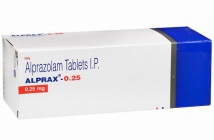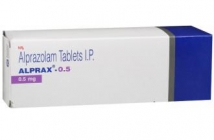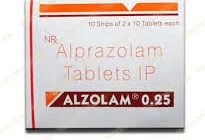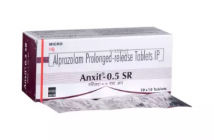Home / Categories / ZOLIUM-10MG

ZOLIUM-10MG
(20)
CHLORDIAZEPOXIDE-10MG
BENZODIAZEPINES
ASIAN PHARMACEUTICALS-SOLAR-DIVISION
Product Details
Chlordiazepoxide
Action
Indications
Contraindications
Route/Dosage
Interactions
Lab Test Interferences
Adverse Reactions
PrecautionsPatient Care Considerations
Administration/Storage
Assessment/Interventions
Patient/Family Education
(klor-DIE-aze-ee-POX-ide)Libritabs, Librium, Mitran, Reposans-10,  SoliumClass: Antianxiety/benzodiazepine
SoliumClass: Antianxiety/benzodiazepine
 Action Potentiates action of GABA to produce CNS depression.
Action Potentiates action of GABA to produce CNS depression.
 Indications Management of anxiety disorders; relief of acute alcohol withdrawal symptoms; relief of preoperative apprehension and anxiety. Unlabeled use(s): Treatment of irritable bowel syndrome.
Indications Management of anxiety disorders; relief of acute alcohol withdrawal symptoms; relief of preoperative apprehension and anxiety. Unlabeled use(s): Treatment of irritable bowel syndrome.
 Contraindications Hypersensitivity to benzodiazepines; psychoses; acute narrow-angle glaucoma; shock; coma; acute alcohol intoxication.
Contraindications Hypersensitivity to benzodiazepines; psychoses; acute narrow-angle glaucoma; shock; coma; acute alcohol intoxication.
 Route/Dosage
Route/Dosage
Individualize dosage. Acute symptoms may be rapidly controlled IM or IV, with subsequent oral treatment (maximum 300 mg/day).
Mild-to-Moderate Anxiety
ADULTS: PO 5–10 mg tid or qid.
Severe Anxiety
ADULTS: PO 20–25 mg tid or qid. Initial dose: IM/IV 50–100 mg, then 25–50 mg tid or qid. ELDERLY OR DEBILITATED PATIENTS: PO 5 mg bid to qid. IM/IV 25–50 mg.
Preoperative Apprehension/Anxiety
ADULTS: PO 5–10 mg tid or qid on days preceding surgery. IM 50–100 mg 1 hr prior to surgery.
Acute Alcohol Withdrawal
ADULTS: IM/IV 50–100 mg; repeat q 2–4 hr prn. PO 50–100 mg, repeat prn (maximum oral or parenteral dose is 300 mg/day). CHILDREN (> 6 YR): PO 5–10 mg bid-qid; may be increased to 10 mg bid-tid. CHILDREN (> 12 YR): IM 0.5 mg/kg/day 6–8 hr.
 Interactions
Interactions
Alcohol and CNS depressants: Additive CNS depressant effects are possible. Cigarette smoking, theophyllines: May antagonize sedative effects. Cimetidine, oral contraceptives, disulfiram, omeprazole: May increase effects of chlordiazepoxide with excessive sedation and impaired psychomotor function. Digoxin: May increase serum digoxin concentrations.
 Lab Test Interferences None well documented.
Lab Test Interferences None well documented.
 Adverse Reactions
Adverse Reactions
CV: Cardiovascular collapse; hypotension; hypertension; tachycardia; bradycardia; edema; phlebitis or thrombosis at IV sites. CNS: Drowsiness; confusion; ataxia; dizziness; fatigue; apathy; memory impairment; disorientation; anterograde amnesia; restlessness; headache; slurred speech; loss of voice; stupor; coma; euphoria; irritability; vivid dreams; psychomotor retardation; paradoxical reactions (eg, anger, hostility, mania, insomnia, muscle spasms). DERM: Rash. EENT: Visual or auditory disturbances; depressed hearing. GI: Constipation; diarrhea; dry mouth; coated tongue; nausea; anorexia; vomiting. HEMA: Blood dyscrasias including agranulocytosis; anemia; thrombocytopenia; leukopenia; neutropenia. HEPA: Abnormal liver function tests; hepatic dysfunction including hepatitis and jaundice. OTHER: Dependency/withdrawal syndrome.
 Precautions
Precautions
Pregnancy: Category D. Avoid especially in first trimester due to possible increased risk of congenital malformations. Lactation: Excreted in breast milk. Children: Initial dose should be small and gradually increased. Oral form not recommended in children < 6 yr; parenteral form not recommended in children < 12 yr. Elderly or debilitated patients: Initial dose should be small and gradually increased. Use with caution in patients with limited pulmonary reserve. Dependency: Prolonged use can lead to dependency. Withdrawal syndrome has occurred within 4–6 wk of treatment, especially if drug is abruptly discontinued. For discontinuation after long-term treatment, use caution and taper dosage. Psychiatric disorders: Not intended for patients with primary depressive disorder, psychosis or disorders in which anxiety is not prominent. Parenteral administration: Reserved primarily for acute states. Renal or hepatic impairment: Observe caution to avoid accumulation of drug. Suicide: Use with caution in patients with suicidal tendencies; do not allow patient access to large quantities of drug.
PATIENT CARE CONSIDERATIONS
 Administration/Storage
Administration/Storage
- Give oral form with food or milk to decrease GI irritation.
- Do not open capsules.
- Use parenteral solutions immediately after reconstitution. Discard unused portion.
- For intramuscular administration, reconstitute with diluent provided. Do not use diluent if opalescent or hazy. Agitate gently until dissolved. Give injection slowly deep in upper quadrant of gluteus maximus muscle.
- For intravenous administration, reconstitute with 5 ml sterile physiologic saline or Sterile Water for Injection. Do not use diluent for intramuscular form. Administer injection slowly over 1 min.
- Do not inject intra-arterially; intra-arterial injection may produce anteriospasm that can lead to gangrene.
- Keep powder form away from light. Store in refrigerator until reconstitution.
 Assessment/Interventions
Assessment/Interventions
- Obtain patient history, including drug history and any known allergies. Consider cross-sensitivity with other benzodiazepines.
- Monitor BP, pulse rate and respiratory rate frequently when giving drug parenterally.
- Assist with ambulation and use side-rails; drowsiness and orthostatic hypotension may occur early in therapy.
- Monitor CBC; blood dyscrasias occur rarely with long-term use.
- Monitor liver function during long-term therapy.
- Assess for ataxia and oversedation in elderly, debilitated patient.
- Monitor mental status: mood, sensorium, affect, sleep pattern, drowsiness, dizziness. Notify physician of mental status changes.
- Observe patient closely for 3 hr following parenteral administration; bed rest is preferred. Do not permit patient to drive or perform other potentially hazardous tasks.
- With treatment for alcohol withdrawal, assess for tremors, agitation, delirium and hallucinations.
- Monitor for paradoxical reactions: excitement, stimulation, acute rage.
- Restrict amount of medication available to patients with suicidal tendencies.
- Observe for physical dependency/withdrawal symptoms with long-term use: headache, muscle pain, weakness, nausea, vomiting, increased anxiety.
- Because of risk of apnea and cardiac arrest with parenteral administration, have resuscitative facilities available.
OVERDOSAGE: SIGNS & SYMPTOMS Drowsiness, confusion, somnolence, impaired coordination, diminished reflexes, lethargy, ataxia, hypotonia, hypotension, hypnosis, coma, death
 Patient/Family Education
Patient/Family Education
- Instruct patient to take drug with food or milk to prevent GI irritation.
- Inform patient that drowsiness may be worse at beginning of therapy. Advise patient to use caution while driving or performing other tasks requiring mental alertness.
- Instruct patient to rise slowly, especially if elderly, to avoid fainting.
- Advise patient to report behavior changes, such as episodes of excitement, stimulation or acute rage, to physician.
- Inform patient receiving long-term therapy or taking high doses that withdrawal symptoms may occur if drug is suddenly discontinued.
- Advise patient to avoid intake of alcoholic beverages.
- Caution patient not to take otc medications without consulting physician.
Books@Ovid
Copyright © 2003 Facts and Comparisons
David S. Tatro
A to Z Drug Facts
Substitutes





